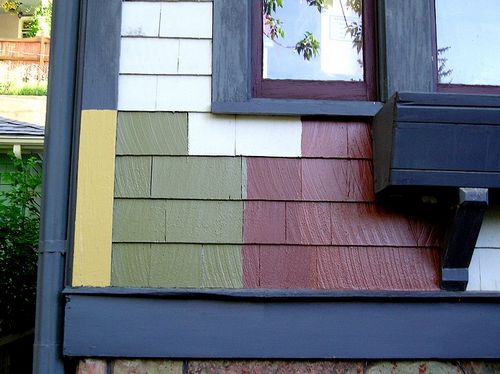Did you realize that painting the the average home will require at least $750.00 worth of paint? If you don’t get the color right, you’ll only have two choices—live with the color for a long time or fork out a big chunk of change to paint your entire home again.
This is the number one reason you want to invest a few dollars and time into applying paint samples to the exterior walls and trim of your home. When you take to time to test the colors you are considering, you have the potential to save considerably, especially if you are doing your own exterior paint job.
If you have several color schemes in mind, use sample boards to narrow down your choices. A sample board can be made of any heavier material. For example, poster board is a popular choice. Homeowners in the midst of a remodel or new construction will find many scraps of drywall floating around. These made great sample boards. You can even use cardboard or a scrap piece of siding/trim.
The material you use isn’t that important. The size is. You want your sample to be at least 2 x 2 ft.; larger is even better.
Many exterior paint jobs have at least three colors—the main color, the trim color, and the color of accessories, such as doors and shutters. Include each of these colors on each sample board. Try to apply each paint color in ratios similar to the ones you’ll use on the house; a large square for the main color, and smaller samples of the accent colors.
Once you’ve narrowed down your choices, you’ll need to apply samples of paint to the house itself. Using the main color, paint a 2 foot by 2 foot square on the siding. If you paint this section adjacent to an area where there is trim, you’ll get a better idea of how your selection is working. Then paint the corresponding trim and accessories.
Light and shadow make as big a difference outside as they do indoors. You should paint a sample on each exterior wall and near any accessories, such as decks and brickwork. The surrounding environment can make a color look very different.
Check the sample both in light and in shade, in the evening and during the day. Picking a shade that looks good all the time will save you time, money, and frustration. This way, you can feel confident that the entire house looks good with the colors you have chosen.
Choosing the color you like may be the most time-consuming part of the process, but remember that it’s only half the battle. If you really want your project to look good, you’ll need to properly prepare the surface and apply an appropriate primer before painting.


